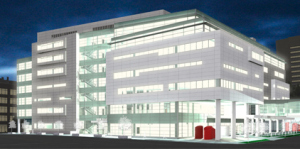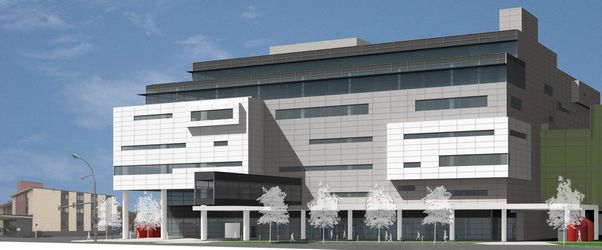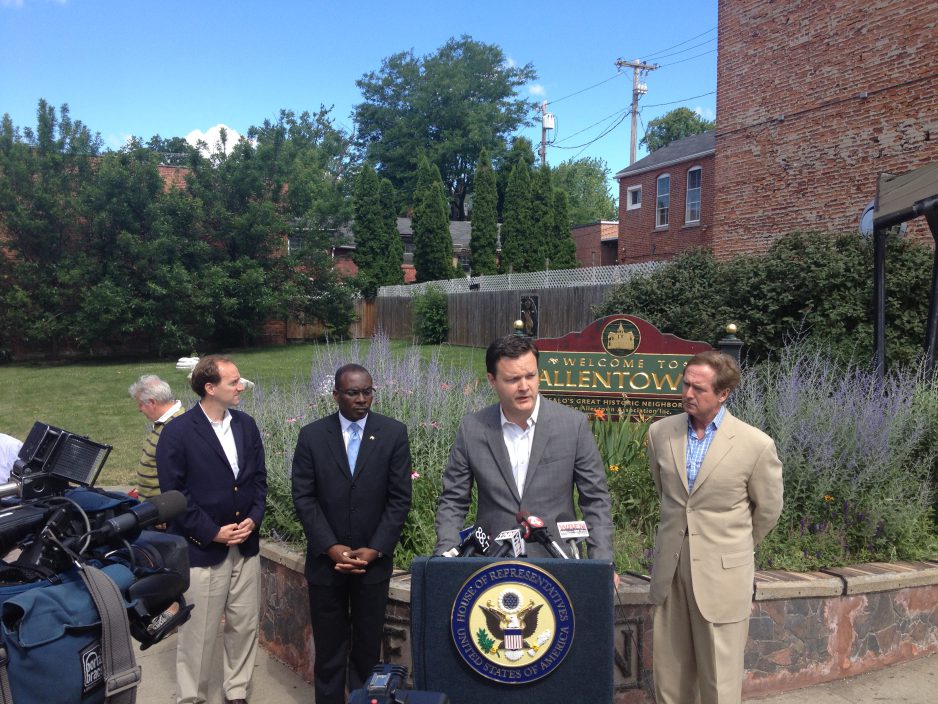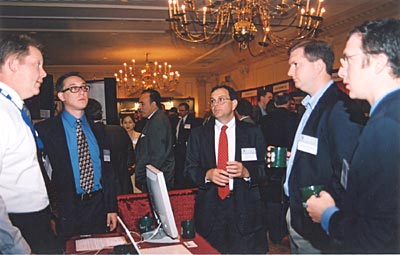BNMC Shifts Existing Grant Funding to Support Efforts of Farmers, Not-for-Profit Organizations, and Small Distributors to Increase Capacity of Local Food Supply Chain During Pandemic
Projects Support the Longer-Term Goal of Improving Access to Institutional Procurement
BUFFALO, NY—The Buffalo Niagara Medical Campus, Inc. (BNMC) has partnered with four local organizations to support projects that will increase the food system resiliency in our community. A total of $20,000 has been distributed to local partners to support the production and distribution of local foods, as well as the sustainability and growth of small farms and distribution businesses that may be impacted by the COVID-19 pandemic.
The funding has been made available through “BNMC Fresh: Farm to Hospital Implementation,” an existing three-year grant that the BNMC received in 2018 through the United States Department of Agriculture (USDA)’s Local Food Promotion Program.
This collaborative initiative is designed to create a model that prioritizes local agriculture from New York State, enabling farms to access new markets (hospitals), and can be replicated across the state. The initiative is expected to create a culture that embraces local farms through prioritizing local procurement; establishes and expands community supported agriculture (CSA) and farmers’ market programs; establishes food chain transparency; increases awareness and knowledge among consumers of local food procurement efforts; and provides knowledge and skill-building opportunities to agribusiness stakeholders (farmers, distributor, food service teams). This project ultimately aims to make local procurement a regular practice and culture among health care institutions.
“Our grant manager at USDA was very understanding about our efforts to increase healthy local foods in hospitals slowing as our health care partners shift their full attention to caring for our community during the COVID-19 pandemic,” said Marla Guarino, BNMC’s Farm to Institution Program Coordinator “We were able to redistribute the funds originally earmarked for conferences, travel, and longer-term strategies that are currently on hold, and expand the scope of the initiative to have a more immediate impact on making our local food system more resilient.”
Guarino added, “Implementing these short-term wins more quickly supports the overall goal of the grant – increasing the ability of small farmers and organizations to play a role in institutional procurement, such as hospitals, colleges and universities, prisons, and school districts.”
In order to support the local food chain supply quickly during the pandemic, the BNMC team looked to extend projects with existing partner organizations, primarily focusing on infrastructure capital improvement; equipment; and data enhancement. Priority was given to projects that were able to be completed within 4-6 months; collaborative efforts; minority and women-led; and infrastructure moving toward institutional procurement in the future. All final decisions required wp-contentroval from the BNMC USDA grants manager.
The team worked with the USDA in April for wp-contentroval to redirect funding, and identified the priority projects with partner organizations in May. All organizations received the funding over the summer and are well on their way to enacting change.
The following four organizations each received $5,000:
St. John’s Baptist Church, God’s Farm’acy Mobile Truck
God’s Farm’acy is a mobile food truck and raised garden initiative that distributes hot meals, fruits, and vegetables for free throughout the Fruit Belt and other underserved communities. The team at St. John’s also uses the truck to offer healthy cooking classes in the community. They used the funds to add refrigeration to the mobile food truck, allowing them to help eliminate food desserts by increasing access to fresh foods and nutrition information. Received: Funds toward refrigeration for Mobile Truck
Groundwork Market Garden: Groundwork Market Garden is a family-owned farm on the East Side of Buffalo. GMG received funds to develop and promote a digital catalog of local farm products available for purchase. This digital catalog will be updated regularly and used to secure business with larger institutions that small farms traditionally do not serve. GMG plans to include all local urban growers into the catalog as a way to procure larger contracts and promote local farms. Received: Funds for development of digital catalog, on-line marketplace and marketing support
“These funds are helping to bring our farm up to speed with the current trend for local food to be available through online marketplaces,” said Anders Gunnersen, GMG cofounder. “The online catalog will separate our products by retail and wholesale and will be used as a means to sell produce, and as a marketing tool for our farm to reach more people and institutions in the city of Buffalo and Western NY. This project is going to streamline our sales processes and tracking, and better market our products to a much larger and broader audience.”
Produce Peddlers: Produce Peddlers is an online marketplace for buying and selling produce that prevents food waste and saves money. They received funds to reconfigure its delivery van with a refrigeration unit to increase its ability to deliver fresh and local perishable goods to consumers and businesses in the WNY region. When the COVID-19 pandemic closed many businesses, farmers and other suppliers started to back up on product. In an attempt to help, Produce Peddlers opened its marketplace to individual consumers, who were also looking for alternative avenues to source their food that didn’t involve having to go out in public places. Refrigeration will allow Produce Peddlers to handle more goods safely, be GHP compliant, and streamline its delivery methods. Received: Funds for refrigeration for mobile truck
“The ability to refrigerate our delivery vehicle has propelled our business to new heights!” said Gina Wieczorek, Co-founder, VP Operations, Produce Peddlers. “We are now able to safely transport and deliver all sorts of locally grown and produced food, including animal products, meat and other processed items, to restaurants, schools and institutions all over WNY without breaking the cold chain.” 
Urban Fruits & Veggies: Urban Fruits & Veggies is an urban agriculture business with two urban farms and a mobile produce market focused on providing access and nutrition education to underserved communities in the WNY area. As a result of the COVID-19 pandemic, they are growing three times as much as they usually do to support requests for food delivery, and therefore need additional growing supplies, specifically refrigeration equipment. They also need office equipment to facilitate data tracking and growing partnerships with organizations and established programs to ensure they are addressing the social determinants to health. Received: Funds for computer, laptop and printer
###
About the Buffalo Niagara Medical Campus, Inc.
The Buffalo Niagara Medical Campus (BNMC): re-imagining our city’s future through the dynamic intersection of technology, health, discovery, and collaboration. The BNMC is a social enterprise focused on cultivating inclusive innovation in partnership with our community. We do this by improving infrastructure, managing our transportation system, creating a culture of health and wellbeing, driving innovation, and working with our partners to continue to build an innovative district that reflects the best of our community. In addition, the BNMC owns and operates more than 150,000 sq ft of incubator space, helping to grow a diverse array of emerging and mature companies through dynamic workspace, programming, and networking. www.bnmc-old.local
###
For more information: Marla Guarino, 716.867.9528











